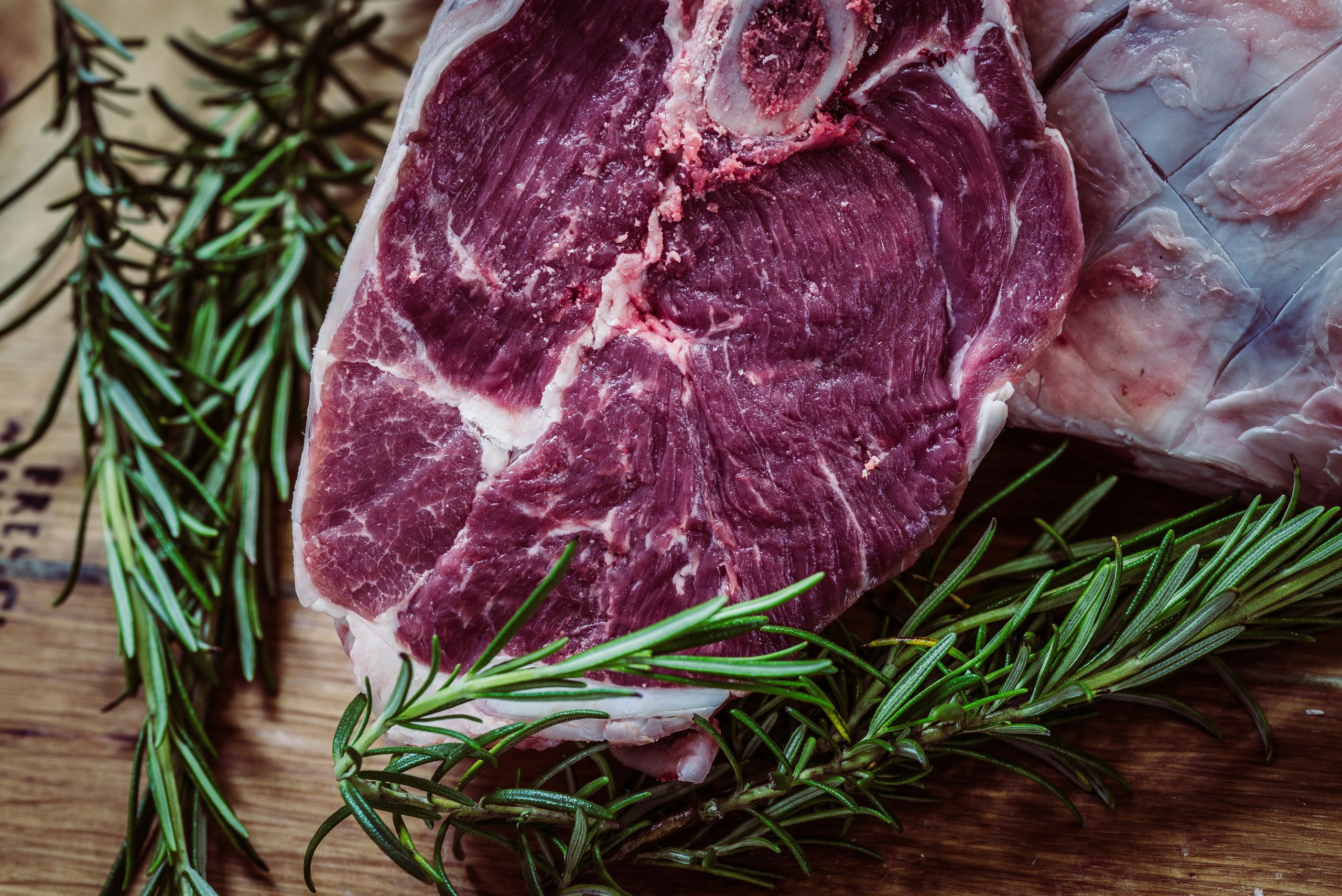Could lab-grown meat revolutionise vegetarianism? Photo credit: Jez Timms via Unsplash
As a vegetarian, I am all too familiar with meat alternatives. While these used to be far more difficult to get hold of, there are now a large variety of them available in almost all supermarkets, including pea, soya, and mycoprotein. Although the increase in the variety of meat alternatives has been very good in providing people like me with more choice, plant- and fungus-based meat alternatives aren’t popular with everyone. In various studies, meat eaters have been surveyed on their opinions of meat alternatives, with most studies suggesting that alternatives are generally perceived to have a worse taste and texture than meat itself. For example, in one survey, vegetarian sausage scored around 36 on a 0–100 scale (with 0 representing ‘disgusting’ and 100 representing ‘tasty’). The equivalent for a meat sausage is around 72: far tastier than the vegetarian sausage. For people like me who have never eaten meat, this isn’t so much of an issue as we don’t have a reference for what meat tastes like. For someone who is newly vegetarian or just wants to reduce their meat consumption however, the perceived low quality of meat alternatives could put them off.
…the perceived low quality of meat alternatives could put them off.
For many years, another potential option has been considered: taking a small number of animal cells and then growing them in a lab to make something nearly identical to meat. In a 1931 essay by Winston Churchill, Fifty Years Hence, in which he presented his prediction of the 1980s, he suggested ‘we shall escape the absurdity of growing a whole chicken in order to eat the breast or wing, by growing these parts separately under a suitable medium’. While he may not have been accurate about when this would become possible, his idea was certainly not lost to time.
Around 20 years later, Willem van Eelen, a Dutch researcher who both suffered from starvation as well as witnessed brutal animal abuse as a prisoner of war in WWII, independently came up with the same idea. Unlike Churchill, who was better known for his other work, van Eelen made it a lifelong goal to make lab-grown meat a reality. In 1999, this dream was realised when he received patents, both in the US and internationally, for lab-grown meat. At least in theory, it seems like this should solve the current problems we have with meat alternatives: if we can create something that is truly identical to traditional meat, then it should taste and feel identical to traditional meat, as well as be nutritionally the same.
…if we can create something that is truly identical to traditional meat, then it should taste and feel identical to traditional meat, as well as be nutritionally the same.
To produce cultured meat, stem cells are harvested from muscle and adipose (body fat) tissues of the animal; these can then be matured in a lab and structured to resemble meat. The exact method by which these cells mature into cultured animal tissue is dependent on the tissue that is being cultured: muscle tissues are usually matured in the presence of foetal bovine serum (a by-product of the meat industry), whereas adipose tissues can be matured in the presence of free fatty acids.
…meat has a relatively more complex structure including muscle and adipose tissue, which must be combined to create a structure resembling meat.
Although these methods were detailed by van Eelen in his 1999 patent, progress on making this feasible on a large scale is relatively recent. One of the notable issues is that, while generating a single mammal tissue has been feasible since at least 2000, meat has a relatively more complex structure including muscle and adipose tissue, which must be combined to create a structure resembling meat. There were developments over the following decade, but it was not until 2013 that the first burger made entirely from cultured animal cells was created by a team led by Mark Post. Van Eelen unfortunately passed away in 2015, never seeing his life’s work of trying to make cultured meat feasible for mass markets come to fruition.
While the burger produced by Post’s team in 2013 was promising—the food experts interviewed had very positive opinions, though they did agree that it was nowhere near identical to meat yet—it ended up costing tens of thousands of pounds to create a single burger. To reduce this cost significantly, it will be necessary to find a way to make the meat structure from the cultured tissues on a much larger scale. Despite the huge cost, the study did show that the environmental impact of cultured meat, even on a small scale, could be significantly smaller than that of the equivalent conventional meat. An independent study showed that cultured meat can decrease the energy usage in meat production by up to 45%, greenhouse gas emissions by up to 96%, and land use by up to 99% compared to conventional meat.
…cultured meat can decrease the energy usage in meat production by up to 45%, greenhouse gas emissions by up to 96%, and land use by up to 99%
In the years since, many cultured meat companies have been set up worldwide, with many different meats (including beef, poultry, pork, a variety of seafood, and even kangaroo and horse) being created in labs. The industry as a whole has received many millions of dollars in funding. With the recent advancements that these start-ups have made, efficiency and regulation are the final stages before scaling production up to the point where cultured meat can be sold in supermarkets. However, despite improvements made in the last few years, large-scale cultured meat production is potentially far more expensive than for conventional meat with current technologies. Regulatory approval is also a slow process, with only a few companies worldwide approved to sell cultured meat to the public even in small tasting sessions. Because it is still a novel variety of food at the moment, food safety organisations are generally hesitant to approve it quickly. I don’t see cultured meat becoming commonplace in supermarkets as a viable meat alternative for most people very soon, although it could be only a few years before we start seeing it as a niche luxury product.
When considering meat alternatives’ viability, it is important to consider the reasons why people might want to eat meat alternatives in the first place. Two of the main reasons to avoid eating meat relate to its ethical and environmental impacts. From an ethical perspective, cultured meat is much preferable to conventional meat for vegetarians and vegans, with animals not having to be killed to produce it. There are, however, some ethical concerns with cultured meat that may not be immediately obvious. Maturation of muscle tissue in a lab originally required foetal bovine serum (FBS), which most vegetarians, including myself, would not want to eat; it is a by-product of the meat industry and requires the death of cows to be obtained. There are, however, other options that don’t require cells to be cultured in FBS. Some studies show that cells can be matured in a mixture of transferrin, insulin, and lysophosphatidic acid, and that this is comparably effective to culturing in FBS. As this is not sourced from animals, there are fewer ethical concerns with this method of culturing.
Another ethical consideration is religion: many religions, including Islam and Judaism, have laws surrounding how an animal must be killed in order to be eaten. Whether cultured meat is deemed to be halal or kosher is yet to be determined and will ultimately be up to the religious authorities in question, although even then, there may be disagreements within religions. For example, Israel’s former Chief Rabbi, David Lau, suggested that cultured meat could be considered kosher, but other influential rabbis have suggested otherwise.
From an environmental perspective, cultured meat is undoubtedly far better than conventional meat, although it is still comparably worse than other meat alternatives. CE Delft’s study shows that plant-based meat alternatives can have a carbon footprint 2.5 to 4 times lower than cultured meat. Electricity consumption is one of the most energy-intensive parts of cultured meat production. Unlike with conventional meat, where many of the emissions related to its production are inherent to farming the animals, many of the worst environmental effects present in producing cultured meat would be reduced by using more low-carbon sources of energy. Exactly how much better cultured meat is for the environment will be up to how well governments regulate cultured meat companies’ energy consumptions.
The quantity of cultured meat in future meat alternatives remains to be seen. Personally, if cultured meat were to become widespread and relatively affordable, it would definitely be something I’d at least try (at least if it was assured that FBS was not used). It seems, though, that we are still far away from reaching the point where that is the case. For another few years, therefore, our current plant-based alternatives will dominate worldwide. If and when cultured meat does become affordable, I hope that it persuades at least some more people to consider eating less conventional meat. Likewise, it would be good to see the public embrace this new meat, not being put off by the fact that it’s created in a factory rather than taken direct from an animal.





